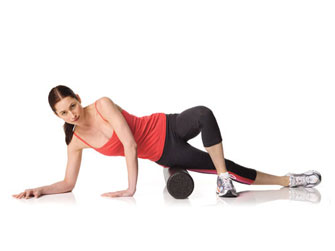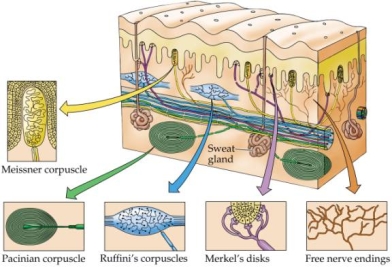Reader Nancy says, “Perhaps you could address whether the foam roller really helps or is it just a torture device.”
Thank you, Nancy, for the suggestion.
I tend to agree with you that foam rolling can be just this side of torture.
But before we dismiss the technique just because it feels so lousy, we should at least look into what it does and if it’s worth doing.
Foam Rolling 101
Have you ever had this happen?
You wake up one morning and discover something is really tight, stiff, and sore?
Maybe it’s your back or your hamstrings or maybe a shoulder.
It just sort of makes sense to you that stretching it would help; that it would feel better somehow.
But, when you stretch, it feels more like steel cables have been inserted into what used to be muscle.
And it hurts.
So, if you’re like most people you turn to your local diagnostician to sort things out.
Google.
And low and behold, one of the common solutions to this vexing problem is the foam roller.

What is a Foam Roller?
A foam roller is a cylinder of high density foam usually 2 to 4 feet in length and about 4-6 inches in diameter. It reminds me of one of those “noodles” that kids use in a pool (or my wife who is still a kid at heart 🙂
Many people use it as a “poor man’s massage” by rolling on it in various directions.
http://youtu.be/gtlDxWjaoUA
Some people swear by it and can’t imagine not using it. Others just feel like all it does is, as Nancy suggests, torture them.
How Does Foam Rolling Work?
The most common explanations are that the rolling “irons out the fascia”, “hydrates the tissue”, and “breaks up muscle knots”.
The logic goes something like this:
- Muscles are enveloped by a soft tissue called fascia (the slick white stuff that covers a chicken breast under the skin that you can’t tear without a knife).
- Injuries to the muscle and/or the fascia cause scarring.
- The scarring causes adhesions or areas where the fascia “sticks” to itself or the muscle.
- The “sticking” keeps the muscle and soft tissue from moving properly and creates pain.
- Rolling on these points – often referred to as trigger points – releases the adhesions and frees up the soft tissue.
- Your performance and movement improve and you no longer hurt.
Only the first two of these statements are true – that muscle is enveloped with fascia and that injuries cause scarring. All the following points are just assumptions without any proof.
Here’s what we actually know about pressure on soft tissue.
A lot of stuff seems to work. Rolfing, Myofascial Release, Active Release Technique, Deep Tissue Massage, Graston Technique, and others.
What do they have in common?
Pressure.
And what makes each differ from the other?
Duration, intensity, and frequency of the pressure.
The Science
WARNING – this is really geeky. If you don’t like geeky stuff, then skip all of this and go to the next section on my suggestions.
Embedded in the fascia that envelopes muscle, are very small sensors known as mechanoreceptors. Mechanoreceptors respond to mechanical stimulation – tapping, pressure, stroking, stretching, etc. And there is a lot going on inside this tissue so hang in there with me.
There are different types – Golgi Tendon Organ, Ruffini and Pacinian Corpuscles. The Ruffini modulate Sympathetic Nervous System activity. Pacinian Corpuscles modulate proprioception (helps you know where your limb is and what it’s doing). Interstitial receptors are linked with the Autonomic Nervous System. These receptors are multi-modal. They can function as mechanoreceptors and as pain receptors.
Nervous System activity. Pacinian Corpuscles modulate proprioception (helps you know where your limb is and what it’s doing). Interstitial receptors are linked with the Autonomic Nervous System. These receptors are multi-modal. They can function as mechanoreceptors and as pain receptors.
When you apply pressure and an ever so slight stretch, which always happens when you deform tissue with pressure, the mechanoreceptors go to work. Some will begin, depending on the intensity of the pressure and your individual tolerance for it, to relax the muscle via a reflex at the spinal cord. The result is you feel looser, more mobile, and less painful.
Some techniques add deep breathing. Deep breathing has been shown to slow the Sympathetic Nervous System – the fight or flight response – and as a result, also reduces the muscle tension.
So, as you roll on the foam roller, you’re applying both pressure and stretch; activating the receptors that then reduce pain and increase mobility.
But, the results rarely stick around.
And that’s because it takes a lot of stimulation, a lot of repetition to permanently change the resting “tone” of your tissue (and by the way, you’re not changing muscle length – you’re changing the tolerance to change in length). So, once you stop, the muscles, tendons and even fascia slowly revert to their prior tension level.
Does Foam Rolling Work?
The science and research on whether foam rolling reduces pain and improves performance is scant. There are only a few studies published and the majority of those suggest that foam rolling has little to no effect on performance.
And one study showed that foam rolling prior to plyometric training – like jumping – was detrimental to performance.
So, while some people seem to respond well to foam rolling, we have little to no evidence to suggest why that is the case or why it seems to help.
Suggestions
Foam rolling seems to work for some people. It seems to help me feel looser (but I typically use it after activity).
One of the keys is finding out what your body likes or responds to when it comes to the intensity, frequency, and duration of the pressure and stretching. You can use anything from a tennis ball to a medicine ball to a foam roller to a golf ball.
You’ll read suggestions of 30 seconds of pressure or 60 seconds, etc. Again, there’s no science here so it’s really up to you. Roll, apply pressure however you want. I find that about a minute or two is enough to feel changes taking place. You might need 10 seconds. Don’t make a big deal out of it.
If you experiment a bit and listen to what your body has to say, you’ll find the right blend of pressure and duration for you.


